"Standard" battleships of the USA, Germany and England. German "Bayern" (h. 3)
It must be said that designing Bayern type battleships set for the German ship builders an extremely difficult task of tying together the “horse and the quivering doe”.
On the one hand, it was necessary, if possible, to adhere to the size of the ships of the previous type, the Koenig-type battleships, and this requirement, oddly enough, was completely justified. The fact is that relatively recently the German fleet completed very expensive work to deepen and expand the fairways, anchorages, etc., including the Kiel Canal, but all of this was designed for the König geometric dimension battleships. Thus, a significant excess of these dimensions would lead to restrictions in the basing sites for new battleships. Let's not forget that for A. von Tirpitz it was extremely important not to inflate the cost of the battleships beyond what was needed - she was, I must say, impressed. Thus, it would be ideal to fit the new battleship in the dimensions of "Koenig" with a minimum increase in displacement.
But on the other hand, the two-bore 380-mm cannon turret was about twice as large as the two-gun 305-mm, and the muzzle energy of a fifteen-inch gun was about 62% more than that of the twelve-inch. Accordingly, the return was much more serious. In other words, the replacement of five 305-mm towers with four 380-mm required an increase in displacement, and in addition, the installation of much better reinforcements that would not allow the body to deform from firing the guns of the main caliber. And with all this in no case could not sacrifice protection!
In general, perhaps, we can say that the German shipbuilders coped with their task, if not to “excellent”, then to a solid four. The newest German superdownnouts turned out to be only slightly larger than König-type battleships: the Bayern hull was 4,7 meters longer and 0,5 meters wider, the board height exceeded those of König’s 0,53 meters. At the same time, the normal displacement increased by 2 750 tons and amounted to 28 530 t - and it was possible to achieve this at the expense of more complete lines of “Bayern”, its total completeness ratio was 0,623, while the equivalent indicator “König” was 0,592.
As for the strength of the hull, it was reinforced by the installation of two longitudinal bulkheads passing throughout the citadel. At the extremities, they were the supporting element of the turret structures, and in the middle of the hull they divided the engine and boiler rooms into compartments, and, together with two armored bulkheads, provided resistance to the bending of the hull on the wave. At the same time, they, together with the transverse bulkheads of turret structures, constituted a rigid foundation for perceiving the recoil of salvos of main-caliber guns. The rest of the hull design was created on the basis of typical Kaiser solutions fleet, but - with all-round lightening of weights. The latter was the subject of criticism by later researchers - for example, the well-known specialist of the Kaiser shipbuilding Erwin Shtrobush believed that the Bayern and Baden hulls cause concerns regarding the strength of the main ties.
The anti-torpedo defense of the German super-dreadnoughts was quite interesting. These ships had a double bottom only at the bottom level, but where it passed into the sides and up to the lower edge of the armor belt, there was nothing like that - only the sheathing of the board. However, behind the casing at a distance of 2,1 m (in the extremities this distance was less) there was a longitudinal bulkhead made of shipbuilding steel with a thickness of 8 mm. Its bottom rested on a double bottom, the top - closed with the bevel of the armored decks. The idea was that the torpedo landed on the side rather easily pierced it, but then the energy of the expanding gases was spent on filling the empty compartment, which was supposed to weaken the force of the explosion. Well, the main defense was located even further - at a distance 1,85 m from the bulkhead described above, there was a second one, made of 50 mm armor. The space between them was used as coal bunkers, which created an additional “defense line” - coal “braked” shrapnel fragments and 8-mm bulkheads, if the latter was also destroyed by an explosion, reducing the chances of breaking PTZ armor. At the same time, the Germans believed that 0,9 and coal provide the same protection as a steel bulkhead with a thickness of 25 mm. It was assumed that when fully filled with coal holes and intact waterproof bulkheads, the entry of a torpedo into the center of the Bayern hull would result in a total 1,5 degree roll.
Thus, the anti-torpedo protection of Bayer-type battleships was very powerful, but it also had a “weak link” - these were the rooms of traverse torpedo tubes of 600-mm caliber. They could not find a place in the citadel, so that they were located outside of it representing a large weakly protected compartments. Underwater damage in these areas automatically led to extensive flooding, since, due to the design features of the torpedo tubes and the equipment serving them, it was not possible to separate these compartments with watertight bulkheads.
A good illustration of this weakness was the detonation of the Russian mines of the battleships Bayern and Grosser Kurfürst during Operation Albion. “Grosser Kurfyurst” got a hole in the middle part of the hull, within the PTZ, which took 300 tons of water, and that was the end of his troubles. At the same time, the Bayern exploded on exactly the same mine in the area of the nose section of the torpedo traversing apparatus — outside the citadel and its PTZ. Russian mine contained 115 kg of TNT, which in itself is not so much, but its destructive energy initiated an explosion of 12 compressed air cylinders, which resulted in destroyed bulkheads and flooded not only the torpedo tube section, but the nearby nasal compartment torpedo tubes.
The battleship accepted 1 000 t of water, and it was necessary to level it with counter-flooding of the feed compartments - taking into account the latter, it received up to 1 500 t of water. The main systems of "Bayern" continued to function, and he could fire from the guns of the main caliber (which he immediately proved by suppressing Russian battery No. XXUMX with fire), in this respect the ship remained wave-capable, but the damage it received led to a critical loss of speed.
After the explosion, the battleship went to Tagalakht bay at the slightest speed, where it anchored to put a plaster on the hole, as well as reinforce the bulkheads, and all this was done, but subsequent attempts to pump out the water were unsuccessful. Then the 3 battleships of her squadron, including the Bayern and the Grosser Kurfürst, took to the sea - they went to Putsig to bunker, from where the "wounded" had to go to repair in Kiel.
The ships yielded only 11 nodes of the course, but it turned out that Bayern could not even withstand this — 1 an hour 20 minutes after the start of motion on it had to slow down. The water again entered the nasal compartments, and the main bulkhead, which withstands the water pressure, was bent on 20 mm. If she could not stand it, the spread of water inside the ship could become completely uncontrollable.
However, the reduction of the course did not give any effect - soon it had to be reduced again, and then, three hours after the start of the campaign, “Bayern” was forced to stop completely. In the end, the command became clear that they could not bring the super-dreadnought to Putsig and it was decided to return it to Tagalakht Bay, and on the way back Bayern could not go faster than the 4 nodes. Here he waited for a long repair. For two weeks the crew was engaged in reinforcement of the bulkheads - on top of all the seams were placed wooden bars, with a lining of elastic material, which were reinforced with numerous struts and wedges. Bulkhead holes were wedged and filled with cement, etc. And only after this, the battleship ventured to re-launch into the sea, while at the junction the ship barely held 7-10 nodes, the plaster was torn off, water poured into the partially drained compartments, but the ship commander decided not to interrupt the march, as reinforced bulkheads kept well, and even ventured to develop 13 nodes on the final leg of the route.
All of the above does not inspire much optimism in terms of the strength of Bayern hull structures. Of course, in Operation Albion, under the complete domination of the German fleet, he could be provided with the most “preferential” conditions for repairing damage, but there is no doubt that if the ship received such damage in a battle with the British fleet, it would cause his doom
Again, it is interesting to compare the state of “Bayern” and “Lyuttsov”, which suffered similar injuries in the Battle of Jutland: as a result of two hits of 305-mm projectiles from Invincible, or, perhaps, Inflexible, all its nasal compartments ahead of the nasal the towers of the main caliber were flooded. The ship took on the order of 2 000 t water, and was forced to briefly reduce the speed to 3 nodes, but then recovered and could give 15 nodes for a long time. In the end, it was this damage that led the Lutz to death, but reading the descriptions did not leave the thought that in such conditions Bayern would have lasted even less.
Let us complete the description of the design features of Bayer-type battleships with one very extravagant solution. The fact is that on the super dreadnoughts of the second Reich, the Germans did not find the strength to give up so “necessary” means of warfare, like a ram bow. This was done at the direct insistence of A. von Tirpitz, who believed that the presence of a ram would give the crew of the ship a sense of confidence "in the dump". One can only wonder how such archaic views coexisted in one person, along with advanced views on the use of long-range naval artillery and other innovations.
Power plant
The Eu of the Bayer-type battleships was created according to the three-shaft scheme traditional for the German fleet, which the Germans used extensively on their ships since the 90 of the 19 of the 20th century. Initially, the use of three cars was dictated by the desire to reduce their height, in comparison with the “two-shaft” scheme, but later the Germans saw other advantages of the three shafts. Smaller vibration, better handling, while in the event of the failure of one of the machines, the ship lost only a third, and not half the power of its power plant. Interestingly, for some time the Germans hoped that the movement under the middle machine alone would increase the driving distance, but soon they saw that this idea was not working. Nevertheless, the other advantages listed above made the three-shaft power plant traditional for German heavy ships.
It was originally planned that the "side" propellers will rotate with steam turbines, and the middle shaft will be driven by a powerful diesel engine. But this idea was abandoned at the design stage - the solution with a diesel engine was more expensive, and most importantly, the progress of its development was progressing much slower than the original expectations. As a result, Bayern and Baden received three steam turbine units with Parsons turbines. The steam for them was produced by 14 boilers of the Schulz-Thornicroft system, with three of them working on oil, and the rest had mixed heating, but also could only work on coal or oil. The power of the mechanisms should have been 35 000 hp, while the speed should reach 21 knots.
Unfortunately, the sea trials of “Bayern” and “Baden” were carried out according to an abbreviated program - in connection with wartime. Both of these ships went beyond the normal mile in displacement, more than normal, while they were forced to undergo tests at the shallow measuring mile in Belt, where the sea depth did not exceed 35 m. However, the Bayern developed 37 430 power during the six-hour mileage hp, while the average speed was 21,5 knots., and tests for maximum speed showed 22 node with power 55 970 hp Approximately the same figures were demonstrated by Baden, developing power in 54 113 hp and the speed of 22,086 knots., with a displacement of 30 780 t, that is, on 2 250 t exceeding the normal.
The calculations of German specialists showed that if both battleships were tested in their normal displacement and in deep water, their speed would be an 22,8 node. A relatively small increase in speed attracts attention, despite the fact that the power of the mechanisms turned out to be much higher than planned. The Bayern type battleships proved to be slower than their 305-mm predecessors: the Kaisers developed speed up to 23,6 knots. The Koenig did not yield to them, and the Grosser Kurfurst seemed to set the record for a short time. in the battle of jutland speed in the xnumx node. At the same time, the Bayerns did not reach the 24 nodes, and the reason for this was more complete hull lines, to which the German shipbuilders were forced to resort. The British subsequently studied the Bayern type battleships in great detail, came to a fair conclusion that their shells were optimized for speed in the 23 node, and exceeding this speed required a sharp increase in the power of the power plant.
What can be said about the speed of "Bayern"? Out of doubt, the 21 node was chosen quite rationally and consciously, within the framework of the concept of dividing the main fleet forces into "main forces" and "high-speed wing". "Bayern" were the classic battleships of the "main forces", which additional speed would be superfluous, as it would require the weakening of weapons or reservations, but would give nothing tactically, since the "Baeirnas" would have to act as part of a line of slow-moving . And, again, an increase in the fullness of the hull was caused by more than good reasons.
But alas, as is usually the case, reality has made the most significant adjustments to superbly-logical theoretical constructs. I must say that “Bayern” did not have enough time for the Battle of Jutland: by that time its crew had not yet received full combat training, therefore the battleship was considered a semi-capable unit, which should have been sent into battle except in the case of a direct assault on the German coast by the battleships Grand Fleet. Then, after Jutland, the battleship gained full combat capability, and the German command became somewhat more optimistic about the possible outcome of the confrontation between the line forces of Germany and England in open battle, which was why the plan for the new large-scale operation was conceived. June, July, and early August were spent on rebuilding ships damaged in the Battle of Jutland, and then Hohzeeflott sailed into the sea, and Bayern went on its first combat expedition. But alas, it is not at all the quality to which his admirals and designers intended.
19 August 1916. The battleship Bayern took to the sea ... as part of the 1 reconnaissance group, that is, being numbered among the battle cruisers! It is usually mentioned that the main reason for such a strange decision was the absence of “Derflinger” and “Seidlitz”, which, having received the hardest damage in Jutland, simply did not have time to return to the system with the start of the operation. But we can not exclude the fact that the Germans, faced on the battlecruisers with excellent battleships such as Queen Elizabeth, combining high speed and 381-mm guns, absolutely did not want to repeat this experience and therefore included in the avant-garde battleship that could fight them equally. This latest version is also supported by the fact that, in addition to Bayern, the 1 reconnaissance group, which at that time had only two Fon der Tann and Moltke battlecruisers, was also reinforced by the Markgraf and the Grosser Elector ”, which generally speaking, were faster than Bayern. And if speed were a priority, then it would be quite possible to transfer the 1 th reconnaissance group "instead of the three aforementioned battleships of three ships of the König type or of the Kaiser type - such a combination would turn out to be faster. Nevertheless, Bayern was chosen - the most slow-moving, but at the same time the most powerful 3 of the last series of German dreadnoughts. “Baden” did not take part in this campaign - at the very time when Hochseeflotte went to sea, he was only presented for acceptance tests. However, Bayern did not get a chance to distinguish itself either - there was no collision with the British fleet.
But back to the technical characteristics of this type of battleships. The total fuel supply was 3 560 tons of coal and 620 tons of oil. The course range was calculated to be 5 000 miles on 12 nodes, 4 485 on 15 knots, 3 740 (17 knots), and 2 390 miles on 21 knots. But here there was one important circumstance. As we said earlier, the Germans used coal as a constructive defense of the ship - they were filled with narrow (1,85 m) and long coal pits that run along the entire citadel. As a result, about 1 200 tons of coal were not located along the boiler rooms, from where they would be relatively easy to feed to the boilers, but in the area of turbines and 380-mm towers of the main caliber. The use of these 1 200 tons, of course, led to a certain weakening of the anti-torpedo protection, but the problem was not only and not so much, but the fact that it was extremely difficult to extract these supplies from narrow bunkers in combat and very difficult in the sea. It was necessary to first extract the coal from the bunkers, then drag them to the bunkers located near the boiler rooms, and load them there - all this was very labor-intensive and led to severe fatigue of the crew, which was hardly permissible in combat conditions, when at any time would expect a collision with enemy ships. Thus, these 1 200 t coal became the emergency supply, which would be very difficult to use, and the above range was more theoretical.
The number of crew differed for peacetime and for wartime. According to the schedule, in wartime, the Bayern crew was 1 276 people and Baden was 1 393 people, the difference is due to the fact that Baden was created as the flagship battleship Hohzeeflott, and as such, had additional rooms to accommodate the comflot and his headquarters. I must say that later, when the battleship was handed over to the UK, the British did not like either the officer’s cabins or the crew’s quarters, and only the 60 square admiral’s salon received approval. on "Baden".
This concludes the description of "Bayern" and "Baden" and proceed to the American "standard" battleships.
To be continued ...
- Andrei from Chelyabinsk
- "Standard" battleships of the USA, Germany and England. Who is better? Introduction
"Standard" battleships of the USA, Germany and England. British "Rivengi"
"Standard" battleships of the USA, Germany and England. German Bayern
"Standard" battleships of the USA, Germany and England. German "Bayern" (h. 2)
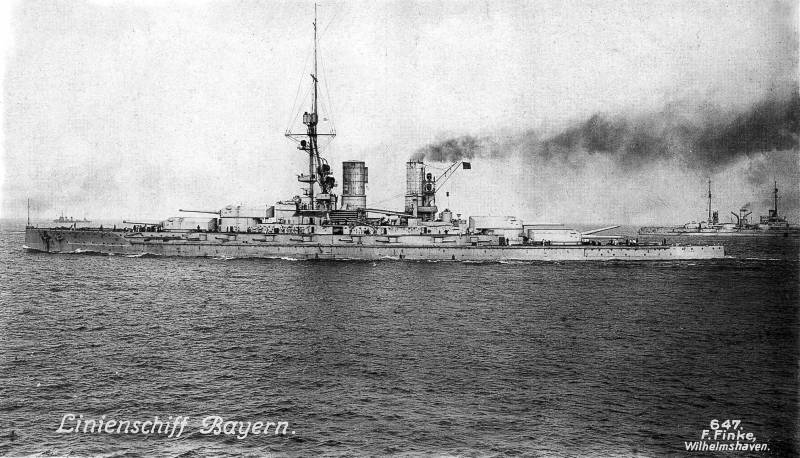
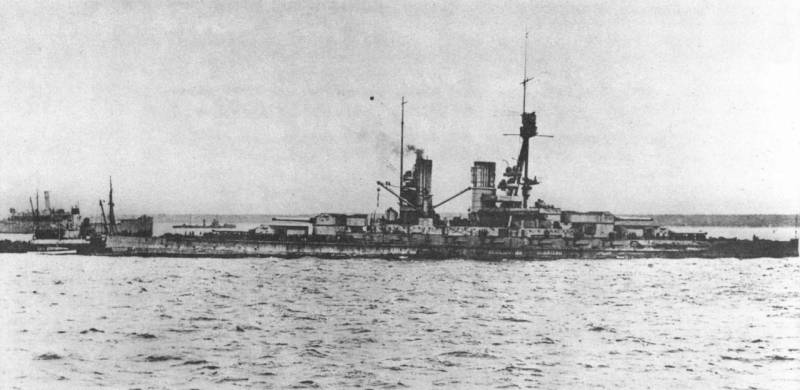
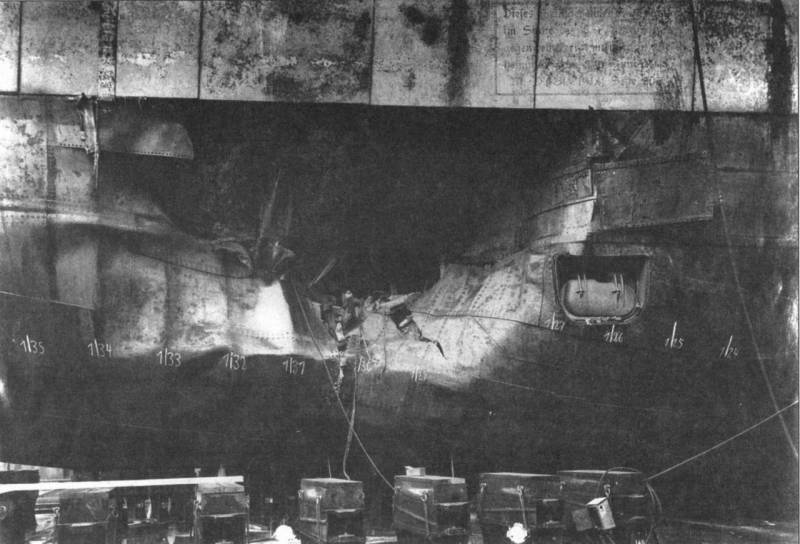
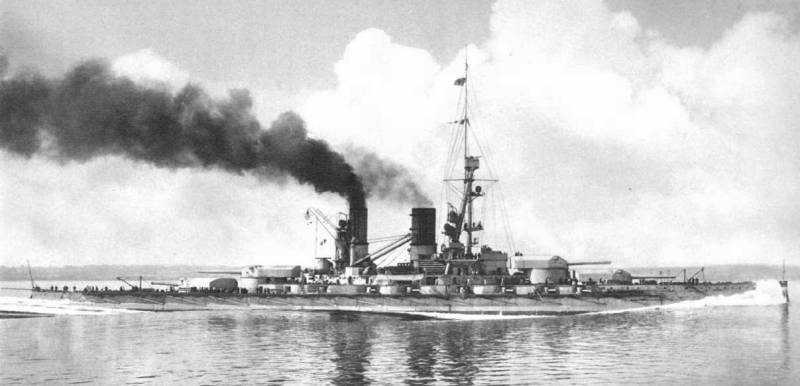
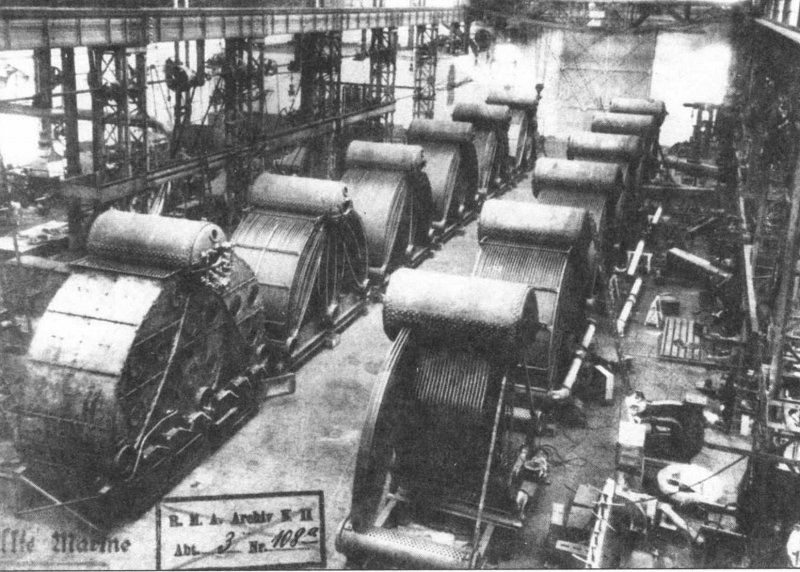
Information